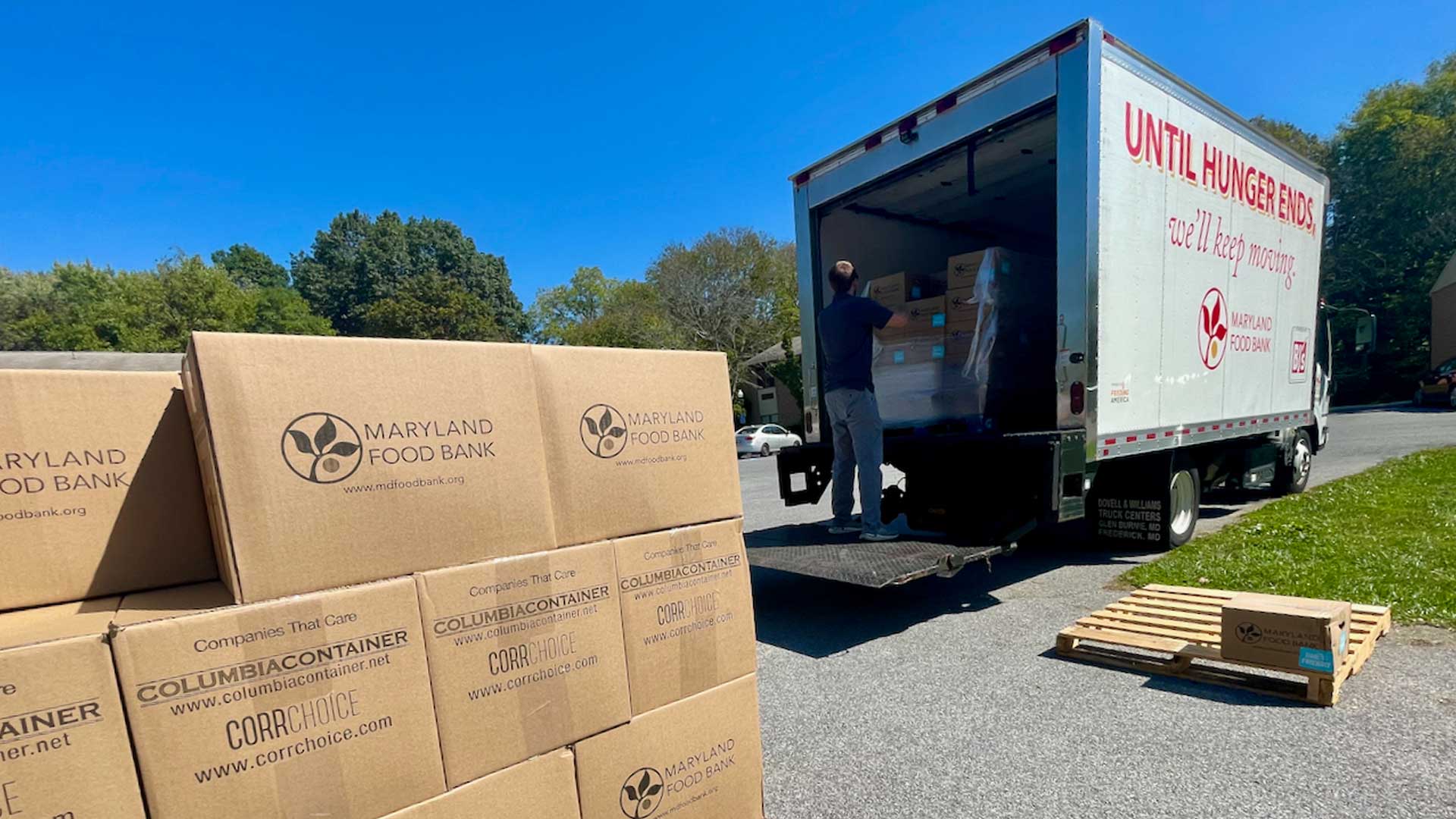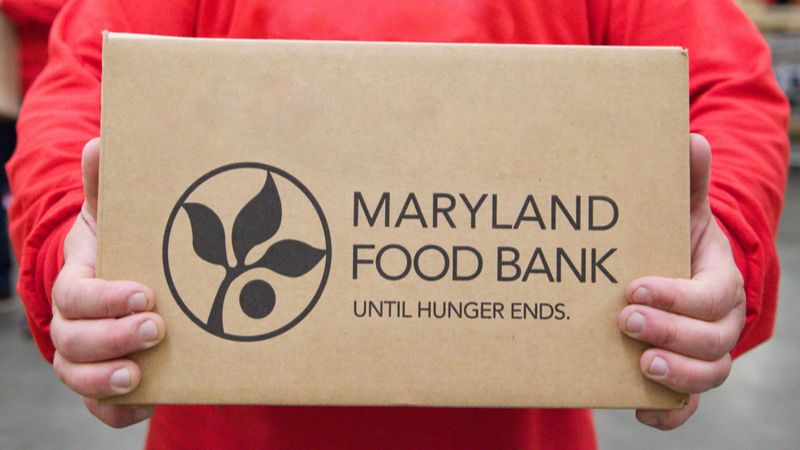How Neighbor Voice is Helping Improve Our Back Up Boxes

“I would like to thank the food bank and all of its helpful partners. I don’t always need, but it’s nice to know when I do…you are there and I’m truly grateful for your help. Thank you so very much. May MFB continue to be blessed as it continues to bless our communities.”
Since our founding in 1979, food assistance in Maryland has changed dramatically. In fact, the past few years have been a microcosm of our ever-evolving efforts over more than four decades. The pandemic forced us to quickly shift the way we thought about food distribution, and out of our commitment to our neighbors, the Back Up Box Program was born.
While Back Up Boxes (BUBs) helped hundreds of thousands of hungry Marylanders navigate a tumultuous period, we’re reevaluating the program post-pandemic to ensure it continues to meet the needs of some of our most vulnerable neighbors.
We know that overall, the higher the quality of the food we distribute, the better the potential outcomes for hungry Marylanders. We’ve worked hard and made excellent progress in increasing the nutritional content of the food our partners provide their communities, but what if our neighbors are unable to use that food due to dietary, cultural, or resource-related issues?
Neighbor Voices Help Inform Program Choices
Under “Expanding Food Access” (the first pillar of MFB 3.0, our strategic plan) we seek to transform the neighbor experience to preserve dignity and remove stigma.
And what better way to reach this goal than to ask the very people who are picking up BUBs about their needs and preferences in an effort to improve our services.
Between November 2022 and March 2023, we included neighbor survey cards in English and Spanish in the BUBs. The cards featured a QR code leading to an online survey with questions about the recipient’s satisfaction with the food in the BUB, whether or not they had previously visited a partner, whether their household receives SNAP, and how they’re actually using the food.
From the responses of more than 400 food-insecure Marylanders, the majority of whom were older adults with health issues and either under-or unemployed, one thing was clear: BUBs continue to serve an important role in the way we provide food assistance.
Approximately 92 percent of respondents said they were “very” or “somewhat” satisfied with the food inside the boxes, with 80 percent stating they were “very satisfied.”
“I’m just really grateful for the boxes. I love my job, but it’s very hard to make ends meet sometimes, and it’s nice to have food to supplement what I can buy.”
A Few Days of Food, a Lifetime of Healthy Resources
In addition to the food in each BUB, we used to included recipe cards and nutritional information (similar to meal kits you see online). But realizing we could do even more to help our neighbors better understand and use the foods they receive, we now include a link to a robust online Recipes and Resources page with hundreds of healthy recipes, cooking suggestions, and nutritional tips.
And when asked about these resources, 77 percent of respondents said they “used” or “are planning on using” the cooking suggestions provided.
“Just a sincere thank you. What MFB provides has been a huge help. Very grateful, not just for the food but for everything else!”
According to the survey, neighbors found the cooking suggestions for vegetables, rice, fruit, and chicken to be the most useful (specifically mentioning the tuna and chicken bowls as favorites from the recipe section) while Spanish-speaking respondents gravitated toward the tips for cooking avena (oatmeal).

A Variety of BUBs to Meet a Variety of Needs
As the BUB program grew over the last few years, so did the variations of boxes, in terms of both size and content. Prior to this recent survey, we heard from some neighbors that the foods that were provided in the original BUBs did not quite meet their needs for various reasons. So we created variations, including some that are Diabetes-Friendly, while others feature more culturally appropriate foods.
We also have two different sizes of BUBs to make them easier for our older neighbors to transport and cut down on any potential food waste.
These versioned BUBs appear to be meeting the needs of neighbors who responded to the survey. Many people told us that their Top 3 reasons for not visiting a partner site for food assistance were: “I do not know where to find free food,” “I have trouble accessing free meals/groceries because I do not have easy access to/couldn’t afford the gas or fare for a car or public transit;” and “I have trouble carrying the food home.”
Multiple neighbors shared gratitude and offered comments on the survey:
Including couples…
“I’m thankful for this healthy meal box, it’s very rich in nutrients and vitamins that help sustain my health. I appreciate the food bank for making resourceful food that we can live by. Peace!”
Hard-working adults…
“I love my job, but it’s very hard to make ends meet sometimes, and it’s nice to have fresh, healthy food to supplement what I can buy. I’m just really grateful for the boxes.”
and families
“My family and I are extremely grateful for meals your organization provides. Without this generosity we would not be able to provide three meals a day to our children.”
The Importance of Feedback in Feeding Programs
To truly help Marylanders in need break the cycle of poverty, we have to really listen to feedback from all stakeholders, especially our neighbors who may be relying on food assistance. While we have the resources to bring in the right food and the logistical expertise to distribute it statewide, we’re more intentionally reaching out to food-insecure individuals to learn not only what people’s true needs are, but the actual barriers that are preventing them from moving forward.
“When we created the Strategy Group, it was this very type of project that we envisioned. Taking an existing program, breaking it down, soliciting feedback from the people who use it, then analyzing that data to create action plans for improvement,” said MFB’s SVP & Chief Strategy Officer Meg Kimmel. “It’s really exciting to have the voices of our neighbors play such a vital role in our strategic efforts.”
Get updates on our progress in the fight against hunger
Want to see how your involvement directly impacts the well-being of your neighbors in need? Get the latest news sent to your inbox.






